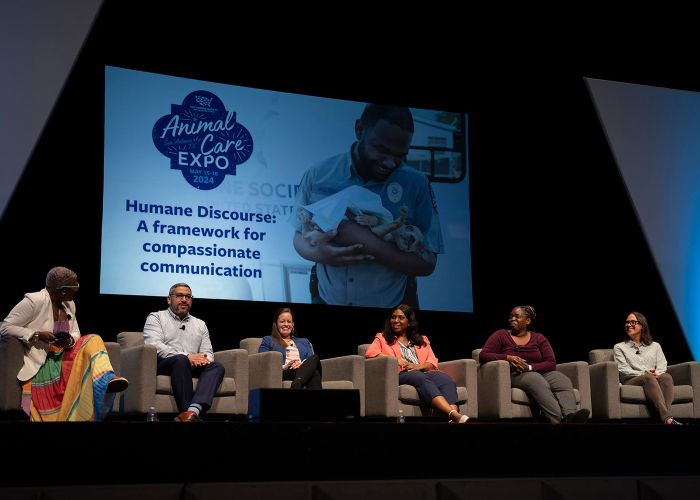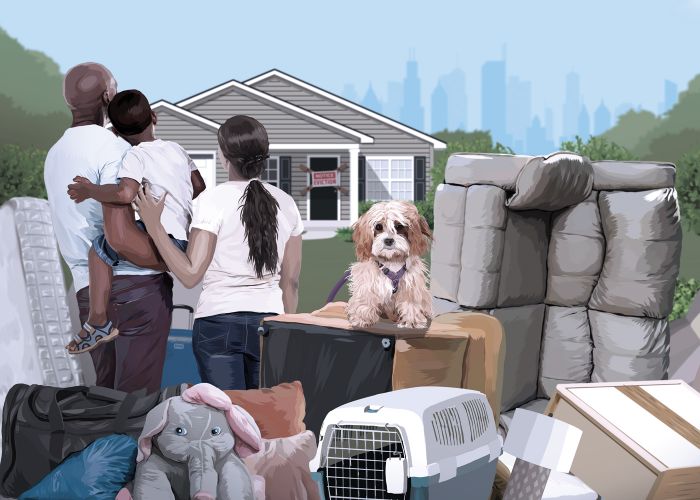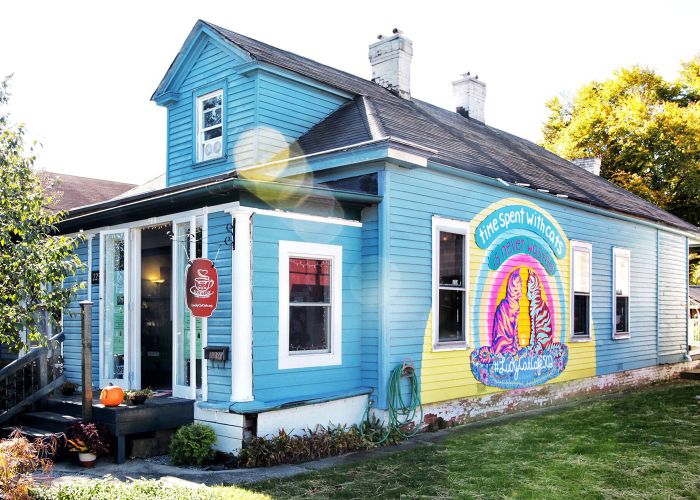Learning to hold (and catch and lead) your horses
Video-based lesson program helps rescues train their horses and increase adoptions
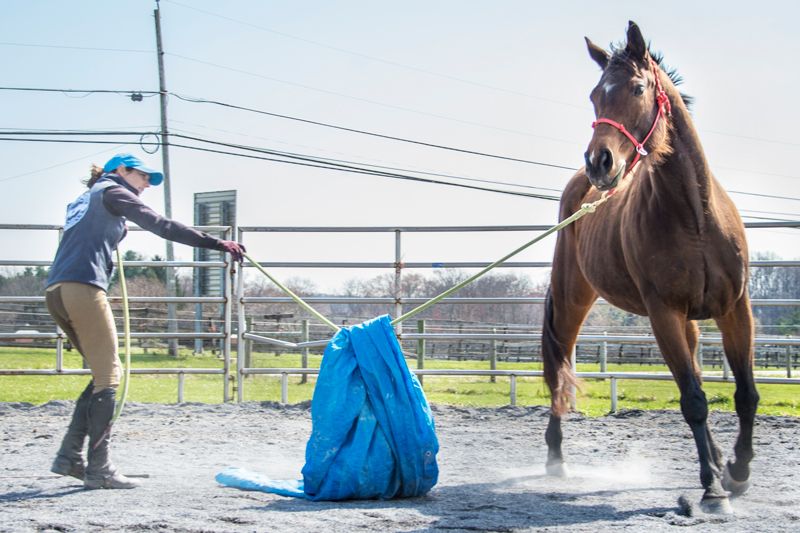
At Days End Farm Horse Rescue in Woodbine, Md., on a sunny Tuesday in March, trainer Sara Strauss is in a round pen working with a mare named Indiana. Strauss is standing in the center waving a long stick with a yellow flag attached to the end, so Indiana circles around her at a walk, trot and canter. After a few minutes, Strauss stops waving the flag and lets the horse come to her.
This creates the choice of “be with me and relax, or go out and work,” so the horse will get in the habit of coming to you when she’s out in the field instead of running away, says Strauss.
Strauss does other exercises, too. She rubs Indiana with a tarp, has her ground tie (stand still without actually being tied to anything) and gently presses her chest with the tip of a long lunge whip (a training device that isn’t used to hit the horse) to encourage her to move away from the pressure.
Indiana came to the rescue emaciated in 2013 and wasn’t healthy enough to begin training until November 2015, but she needs it. She’s super sensitive to touch and likes to respond by biting or kicking. She needs humans to talk to her in her own language, says Strauss.
Strauss does each exercise for a specific purpose, but the overall goal is to train Indiana enough so anyone can handle her—an essential step to making her adoptable.
The training Strauss is doing with Indiana combines her own methods with what she’s learned through a video-based lesson program called Forever Foundation, an HSUS-sponsored program started in 2014.
Because many horse rescues don’t have the time, money or expertise required for training, they have trouble finding homes for their equine charges. To help equine rescues place more horses, The HSUS partners with Carter Ranch Horse on the program, which provides a template designed to fit into trainers’ existing methods.
“It was helpful across the board ... because it gives you that outline and goals to work toward, and it gives you structure,” which can be a challenge for rescue groups, says Strauss.
Now in its third year, the program is producing results—Rainbow Meadows Equine Rescue in Kansas had about a 50-percent increase in adoptions after participating in the program, from 25 to 37 horses adopted in a year, says executive director Karen Everhart.
The free, yearlong program includes video trainings, corresponding tasks for rescues to complete with their horses, conference calls and in-person clinics. This year, there will be regional clinics in Maryland and New Mexico, plus an advanced clinic at the Doris Day Equine Center, an HSUS-affiliated rescue at the Cleveland Amory Black Beauty Ranch in Murchison, Texas. Up to 30 groups that apply can be selected for the program.
Vickie Spears, director of the Doris Day Equine Center, knows firsthand that lack of training is one of the biggest roadblocks to getting a horse adopted—most people who inquire about horses at Doris Day lose interest when they learn the animal isn’t yet trained, she says.
“One of the biggest things we can do to increase adoption rates of horses is to provide those horses some training,” says Spears. “So we’re just trying to give [rescues] more tools to work with, more of a training repertoire.”
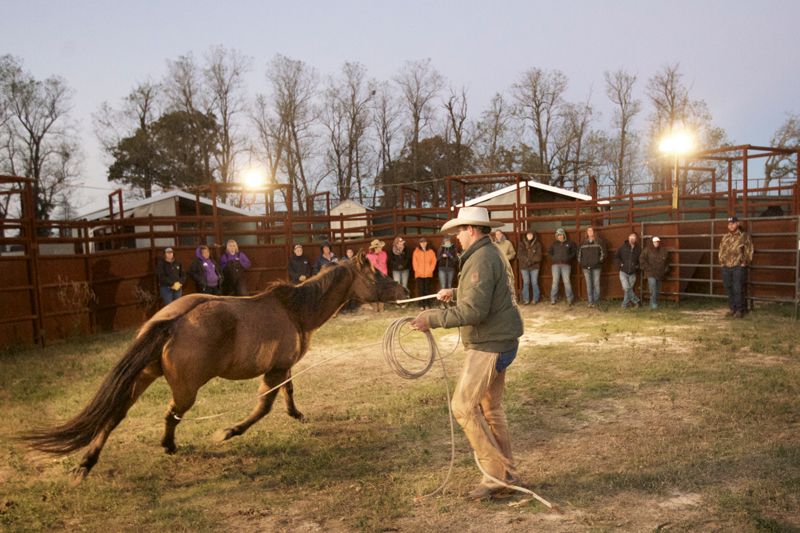
Equine rescues face a unique set of training challenges because of rescued horses’ varied backgrounds. Some horses have lost their trust of people and may have more severe behavior issues, like biting. Others simply haven’t been trained in a long time—for example, a horse trained for riding might not have been ridden for a few years.
Many rescues are small and have no paid staff, notes Cindy Gendron, manager of the Homes for Horses Coalition, a national network of horse rescues and sanctuaries. “Along with the financial aspect of running the business of rescue and the physical aspect of caring for horses, they just don’t have time to do all the training themselves.”
Horse trainers Trevor and Tara Carter of Carter Ranch Horse based the trainings on their existing program for private horse owners. The Carters use natural horsemanship techniques, which focus on communicating with horses in a way the animals understand, with body language and without force. The videos cover topics from “catching” horses (getting them when they’re out in a paddock) to preparing them for farrier visits. Every year the topics covered expand, so returning groups—12 have participated since the first year—can advance.
Rescues find that the program allows them to be more consistent and efficient, because everyone at the organization gets the same information about how to approach and handle horses. The program, especially through its clinics, has given rescues networking opportunities. As more groups join and spread their knowledge to their peers, The HSUS hopes these methods will become standard for rescues all over the country.
At Rainbow Meadows, Everhart says Forever Foundation gives her a template to educate volunteers, instead of coaching them on an as-needed basis, which leads to more consistent handling of the horses. “It really has been a good road map for us, to allow our staff and volunteers to do as well as we can when it comes to having a very uniform method of approaching the horses.”
In addition to adoption increases, Hope Equine Rescue in Florida attributes increases in volunteer participation and retention to Forever Foundation. “Our volunteer participation has gotten a lot better because they’re being a lot more hands-on with the horses,” says president Dani Horton.
That volunteer participation was important in the case of Molly, a miniature horse abandoned with her mother at the clinic of the rescue’s veterinarian. A woman simply left Horton a voicemail and dropped off the horses, not following the approval process for surrenders. The clinic’s office staff assumed it was pre-arranged, since the clinic fosters horses frequently. On top of this surprise, Molly wasn’t easy to handle—she was pushy and dominant when she arrived at the rescue.
After watching the training videos and going through the training with her, volunteers had her so well-trained that she was competing in horse shows with kids and was eventually adopted to a therapy program for children.
Horton notes, “She went from a horse that was really difficult, not easy to manage, to now she works with kids every day.”


